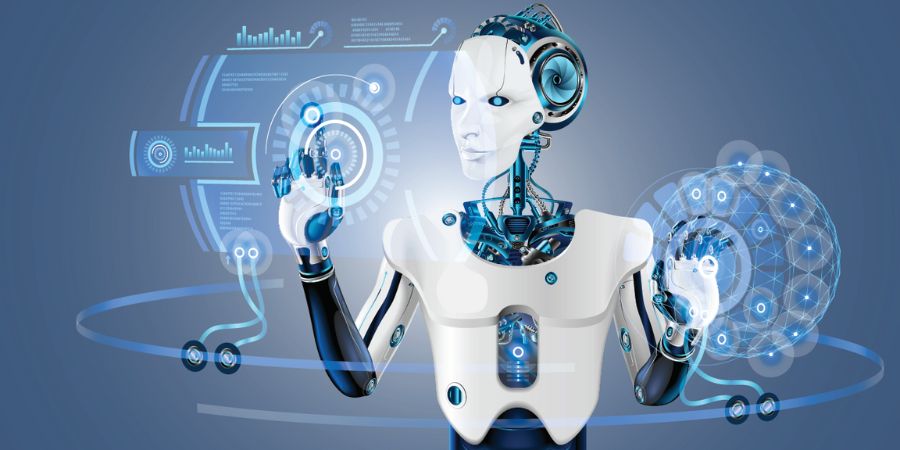What is Robotic Process Automation (RPA)?
RPA has the potential to drastically reduce operational costs, streamline processes, and increase efficiency. In this blog post, we'll explore what RPA is, how it works, and its potential applications.
What is Robotic Process Automation (RPA)?
Robotic process automation (RPA) is a technology that automates routine, rule-based digital tasks. RPA uses a software robot, or "bot," to carry out a variety of repetitive tasks that would otherwise be done manually. This automation technology can save time and resources while helping to ensure accuracy in completing repetitive tasks.
Robotic process automation is designed to make digital workflows faster and more efficient by eliminating the need for manual data entry or processing. It enables businesses to automate mundane and time-consuming tasks, such as data entry, data validation, and even complex processes like customer service requests. RPA can also be used to improve customer experience, optimize business processes, reduce errors, and increase cost savings.
RPA can be used to automate both simple and complex tasks, from automating the transfer of data from one system to another, to managing large databases, or performing customer service functions. Some of the most common use cases for RPA include streamlining order processing, validating customer information, performing back-end system checks, and providing customer support.
Different Types of RPA:
Robotic Process Automation (RPA) is the use of software robots to automate a range of business processes, from simple tasks such as data entry to complex processes such as customer service and analytics. There are three main types of RPA, each with their own distinct characteristics:
1. Rule-Based Automation – This type of automation involves a set of predefined rules or conditions that must be followed in order to perform a task. This is the simplest form of RPA and it can be used to quickly complete mundane, repetitive tasks.
2. Cognitive automation – This type of automation uses artificial intelligence (AI) to understand the context and perform tasks without needing predefined rules or conditions. AI-driven cognitive automation is more advanced than rule-based automation and is used to automate more complex processes, such as customer service, fraud detection, and analytics.
3. Hybrid automation – Hybrid automation combines rule-based automation with cognitive automation to combine the speed of rule-based automation with the understanding of the context provided by cognitive automation. This type of automation is used for highly complex tasks that require both speed and accuracy.
No matter which type of RPA you choose, you will be able to significantly reduce labor costs, streamline processes, improve accuracy, and free up employees to focus on more strategic initiatives.
How RPA Works?
Robotic process automation (RPA) is an automation technology that allows users to configure software “robots” to process and complete repetitive, high-volume tasks. These robots can be programmed to follow a set of rules and workflows to interact with different digital systems, such as databases and applications, to automate routine tasks.
RPA uses artificial intelligence (AI) algorithms to interpret instructions, analyze data, and create outcomes based on the programming instructions provided. This means that a software “robot” can be programmed to autonomously complete tasks and handle manual processes like order processing or data entry.
The robots are able to integrate with existing applications, including user interfaces (UIs), and can read, write, and update data in other applications, such as databases and spreadsheets. They can also access emails and websites, copy/paste data from documents, and enter text into forms. RPA bots can be configured to run multiple processes at once with no human involvement.
By automating these mundane and repetitive tasks, companies can improve operational efficiency and reduce operational costs. RPA solutions provide visibility into organizational processes and are typically cheaper to maintain than traditional IT solutions. Additionally, RPA bots can be quickly deployed and updated to keep up with changing market conditions.
How does robotic process automation differ from intelligent automation?
Robotic process automation (RPA) and intelligent automation are two technologies that are often used in the business world to automate repetitive tasks. While both are forms of automation, there are some important differences between them.
Robotic process automation is a type of software that automates mundane, repetitive tasks that would otherwise be done manually by humans. RPA does not require any prior coding knowledge, making it easier for users to set up and manage. In addition, RPA can be used to automate processes across multiple systems, allowing for a more streamlined approach.
On the other hand, intelligent automation goes beyond basic automation by using AI and machine learning algorithms to improve accuracy, speed, and efficiency. It can analyze data in real time and make decisions on its own without needing any manual input from humans. Intelligent automation is much more sophisticated and complex than robotic process automation, making it more suitable for complex tasks that require complex decision-making.
In summary, while robotic process automation and intelligent automation are both forms of automation, they have different applications and use cases. RPA is best suited for mundane, repetitive tasks, while intelligent automation is better suited for more complex tasks that require advanced decision-making capabilities.
What is the main purpose of RPA?
The main purpose of robotic process automation (RPA) is to automate repetitive, labor-intensive processes and tasks, freeing up employees to focus on more complex or high-value activities. RPA automates mundane, repeatable processes, such as data entry and form processing, reducing human error and improving accuracy.
It also helps with automating workflows and simplifying business processes, while reducing the need for manual intervention. RPA can also reduce costs associated with hiring additional staff or contractors, as well as the time it takes to complete certain tasks. Ultimately, robotic process automation can help to make organizations more efficient, productive, and profitable.





No comments